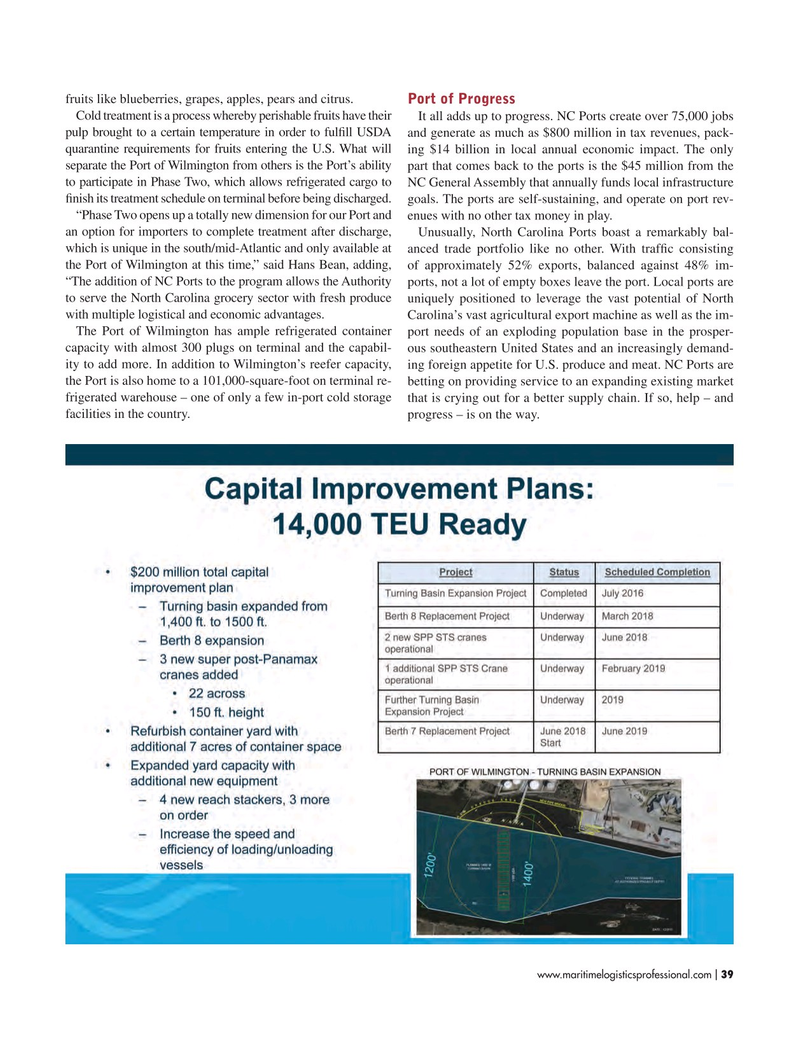
Page 39: of Maritime Logistics Professional Magazine (Nov/Dec 2017)
GREEN PORTS
Read this page in Pdf, Flash or Html5 edition of Nov/Dec 2017 Maritime Logistics Professional Magazine
fruits like blueberries, grapes, apples, pears and citrus.
Port of Progress
Cold treatment is a process whereby perishable fruits have their It all adds up to progress. NC Ports create over 75,000 jobs pulp brought to a certain temperature in order to fulfll USDA and generate as much as $800 million in tax revenues, pack- quarantine requirements for fruits entering the U.S. What will ing $14 billion in local annual economic impact. The only separate the Port of Wilmington from others is the Port’s ability part that comes back to the ports is the $45 million from the to participate in Phase Two, which allows refrigerated cargo to NC General Assembly that annually funds local infrastructure fnish its treatment schedule on terminal before being discharged. goals. The ports are self-sustaining, and operate on port rev- “Phase Two opens up a totally new dimension for our Port and enues with no other tax money in play. an option for importers to complete treatment after discharge, Unusually, North Carolina Ports boast a remarkably bal- which is unique in the south/mid-Atlantic and only available at anced trade portfolio like no other. With traffc consisting the Port of Wilmington at this time,” said Hans Bean, adding, of approximately 52% exports, balanced against 48% im- “The addition of NC Ports to the program allows the Authority ports, not a lot of empty boxes leave the port. Local ports are to serve the North Carolina grocery sector with fresh produce uniquely positioned to leverage the vast potential of North with multiple logistical and economic advantages. Carolina’s vast agricultural export machine as well as the im-
The Port of Wilmington has ample refrigerated container port needs of an exploding population base in the prosper- capacity with almost 300 plugs on terminal and the capabil- ous southeastern United States and an increasingly demand- ity to add more. In addition to Wilmington’s reefer capacity, ing foreign appetite for U.S. produce and meat. NC Ports are the Port is also home to a 101,000-square-foot on terminal re- betting on providing service to an expanding existing market frigerated warehouse – one of only a few in-port cold storage that is crying out for a better supply chain. If so, help – and facilities in the country. progress – is on the way.
www.maritimelogisticsprofessional.com 39
I

 38
38

 40
40
